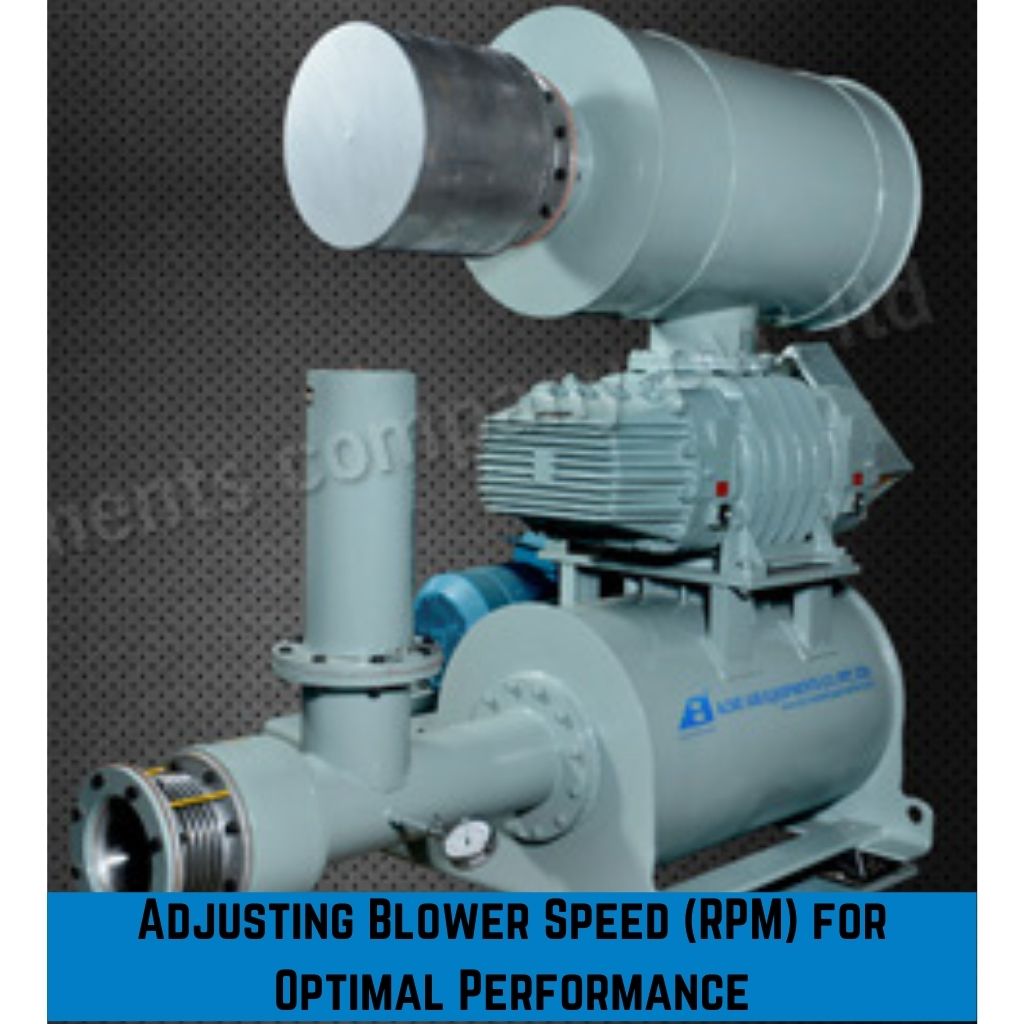Table of Contents
Objective:
This article provides a step-by-step guide to optimize the performance of a Tri-Lobe Roots Blower specifically for use in pneumatic conveying systems. Pneumatic conveying is a crucial process in industries such as food production, chemical manufacturing, and pharmaceuticals, where bulk materials (powders, granules, etc.) need to be transported over long distances using air pressure. By following the outlined tuning steps, operators can ensure that the blower delivers efficient, cost-effective, and consistent performance.
Optimizing blower performance for pneumatic conveying involves ensuring that the blower runs at the correct capacity, with minimal energy consumption, and delivers consistent pressure for effective material transport. This article will cover tuning parameters, maintenance practices, and adjustments necessary to optimize the Tri-Lobe Roots Blower for pneumatic conveying.
Understanding the Tri-Lobe Roots Blower in Pneumatic Conveying Systems
A Tri-Lobe Roots Blower is a type of positive displacement blower designed to provide consistent airflow for transporting materials. In pneumatic conveying, the blower generates the positive pressure required to push air through pipes, allowing for the movement of bulk materials.
For optimal performance, the blower’s capacity, airflow rate, and pressure need to be correctly tuned to match the specific requirements of the pneumatic conveying system. Adjustments can be made to achieve the following goals:
- Minimized energy consumption
- Optimal conveying distance and rate
- Reduced wear and tear on components
Step-by-Step Illustrated Tuning Guide
Check System Requirements and Specifications
Before tuning the Tri-Lobe Roots Blower, you must know the specific requirements of your pneumatic conveying system. These include:
- Required airflow rate (measured in Cubic Feet per Minute or Cubic Meters per Hour)
- Pressure requirements (measured in PSI or Bar)
- Distance and pipe diameter through which the materials will be conveyed.
Once you have the required values for your pneumatic conveying system, compare them with the blower’s specifications to ensure compatibility.
Adjust the Blower Speed (RPM)
The blower speed (revolutions per minute or RPM) directly affects the airflow rate and pressure produced by the blower. Adjusting the speed is one of the most effective ways to optimize performance for pneumatic conveying.
Steps to Adjust RPM:
- Measure the current RPM: Using a tachometer or the blower’s control system, measure the current speed of the blower.
- Calculate the required RPM: Use the blower manufacturer’s charts or formulas to determine the RPM needed to achieve the required airflow and pressure.
- Adjust the motor: If the blower is coupled to a motor, adjust the motor speed using a variable frequency drive (VFD) or similar mechanism to match the required RPM.
Increasing the speed increases the airflow and pressure, but it also leads to higher energy consumption. Therefore, tuning the speed for optimal pressure is critical to avoid overloading the system.

Set the Optimal Pressure for Material Transport
In pneumatic conveying, the pressure generated by the Tri-Lobe Roots Blower is critical for the successful movement of materials. Setting the correct pressure ensures the material flows smoothly without clogs, while preventing excessive energy consumption.
Steps to Set Pressure:
- Check current pressure settings: Use a manometer or pressure gauge to measure the current discharge pressure of the blower.
- Adjust pressure relief valves: Most Tri-Lobe blowers are equipped with pressure relief valves. Adjust these valves to achieve the desired discharge pressure.
- Monitor pressure drop: Over time, check for any significant pressure drop in the conveying pipeline, which may indicate system inefficiency.
Maintaining the correct pressure is essential to prevent excessive wear on both the blower and the conveying pipes, as well as to avoid blockages in the system.
Fine-Tune the Airflow Using Vents and Dampers
Airflow plays a critical role in pneumatic conveying. Too much airflow can lead to material degradation, while too little can result in poor conveying efficiency. Fine-tuning the airflow allows for a balance between pneumatic conveying speed and material safety.
Steps to Fine-Tune Airflow:
- Check for airflow consistency: Ensure that the airflow is steady and consistent throughout the conveying system.
- Adjust dampers: Use dampers or flow control valves to adjust the airflow rate as needed. These are typically installed on the intake or exhaust side of the blower.
- Use air bypass systems: In some systems, an air bypass valve can be used to divert excess airflow, ensuring optimal operation without over-pressurizing the conveying system.
Proper airflow ensures that materials are transported efficiently without excessive wear or backpressure.
Optimize the Blower’s Lubrication System
Effective lubrication ensures that the rotors and bearings in the Tri-Lobe Roots Blower function smoothly, reducing friction and wear. This is crucial for maintaining optimal performance, especially in continuous operations like pneumatic conveying.
Steps to Maintain Lubrication:
- Check oil levels: Ensure the oil levels in the blower’s lubrication system are within the recommended range. Low oil levels can increase friction and wear on components.
- Use the right lubricant: Verify that the lubricant being used matches the manufacturer’s specifications for the type of Tri-Lobe blower you are using.
- Change oil regularly: Follow the manufacturer’s guidelines for oil changes based on operating hours and environmental conditions.
- Check for leaks: Inspect seals and gaskets for any oil leaks, which can lead to reduced lubrication efficiency and potentially damage the blower components.
Maintaining proper lubrication ensures smooth rotor movement, minimizes wear, and optimizes the blower’s energy efficiency.
Maintain Proper Clearance Between Rotors
The rotor clearance between the Tri-Lobe rotors and the casing affects both the efficiency and the lifespan of the blower. The closer the clearance, the more efficient the blower, but too tight a clearance can result in higher friction and wear.
Steps to Maintain Clearance:
- Measure rotor clearance: Use a micrometer or feeler gauge to measure the clearance between the rotors and the casing. Ensure that the clearance is within the recommended range specified by the blower manufacturer.
- Adjust if necessary: If the clearance is too large, consider adjusting the rotor position to reduce it. If the clearance is too small, it could result in excessive friction and higher energy consumption.
Proper rotor clearance ensures that the blower operates efficiently, with minimal wear on the rotors and other internal components.
Regularly Check for System Leaks
Leaks in the system can significantly affect the performance of a Tri-Lobe Roots Blower, causing loss of pressure and reduced conveying efficiency. It is important to check for leaks in both the blower and the conveying system.
Steps to Check for Leaks:
- Inspect connections: Check all pipe connections, seals, and fittings for any signs of air leaks.
- Test under load: Run the blower under load conditions and use a smoke test or ultrasonic leak detector to identify any air leaks.
- Tighten fittings: Ensure all connections are properly tightened to prevent air loss.
Addressing leaks helps maintain system pressure and ensures efficient material conveying.
FAQs
How often should I tune the Tri-Lobe Roots Blower for pneumatic conveying systems?
Tuning should be performed during regular maintenance cycles, typically every 3-6 months, depending on blower usage. It’s also important to perform a quick tune-up if you notice any performance drops, unusual noises, or changes in pressure during operation.
Can I perform the blower tuning myself, or should I hire a technician?
Basic tuning tasks like adjusting RPM, airflow, and pressure can often be performed by trained operators. However, for more complex tasks such as rotor inspection, internal adjustments, or diagnosing severe performance issues, it’s recommended to consult with a professional technician.
What are the common issues if the Tri-Lobe Roots Blower is not tuned correctly?
Common issues include inefficient material transport, excessive energy consumption, blowback or backpressure, and increased wear and tear on components, which can lead to unexpected downtime or system failures.
Can I use a variable frequency drive (VFD) to adjust the blower’s speed?
Yes, using a VFD is an effective method for adjusting the blower’s speed (RPM). A VFD allows precise control over the blower’s performance, ensuring the correct airflow and pressure settings for the pneumatic conveying system.
How do I determine the optimal airflow and pressure settings for my system?
The optimal settings depend on the conveying distance, material type, and system requirements. Refer to the blower manufacturer’s specifications and use pressure gauges and airflow meters to fine-tune the system during startup and regular operation.
Conclusion
Optimizing a Tri-Lobe Roots Blower for pneumatic conveying systems is essential for ensuring high performance, energy efficiency, and reliable material transport. By following the step-by-step tuning process outlined in this article, operators can adjust key parameters such as rotor speed, airflow, pressure, and lubrication to meet the demands of the conveying system. Regular maintenance and tuning not only improve system efficiency but also prevent costly breakdowns and reduce operational downtime. By tuning the blower to match the specific needs of the conveying system, operators can achieve the best performance while keeping costs and energy consumption in check.
About Author

CEO
Mr. Vishwesh Pardeshi is the CEO of Acme Air Equipments Company Pvt. Ltd., an industrial and engineering goods manufacturing company based in Ahmedabad, Gujarat (India). He has taken over the responsibility from founding Partners and Directors of the Company, and is now leading a talented group of professionals since 2020 by bringing in vast industrial and management expertise. By qualification, he holds a Bachelor Degree in Mechanical Engineering and also holds a MBA degree from reputed institutes. Under his leadership, the Company has successfully executed prestigious projects by delivering high quality and world class products from a state of the art manufacturing facility which combines CNC-enabled precision manufacturing and strong after sales support. In line with the Vision, Mission and Core Values of the Organization, Mr. Vishwesh Pardeshi continues to drive Quality, Reliability and Global Expansion at Acme Air Equipments Co. Pvt. Ltd.









